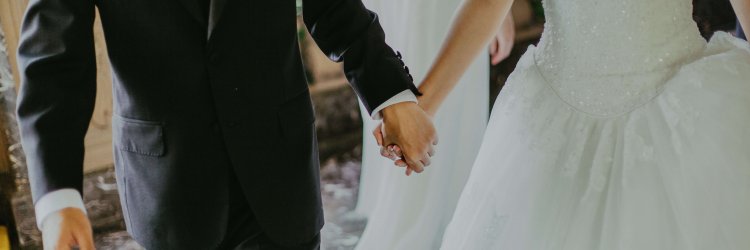Do you know the magical principle of Cost Per Wear? We will explain it to you! With the help of the principle, you will make the life easier for your wallet, closet and mind. In addition, for the environment, which simply suffers from excessive clothing production.
Consumerism is an expensive lifestyle
Rapidly changing fashion trends along with the consumer society are a disaster. The result is an excessive number of things that require too much energy and time. What for? For maintenance, purchase following by cleaning, but also care.Unsuccessful purchase
I recently found myself shopping on an online e-shop that imports its products from China. But I found out only after completing the payment. I waited for that package for about a month. And the result? Shoes were two numbers smaller, a t-shirt in a size of a doll and only one wearable dress. Just because I spent only two thousand crowns on it, I let it be. The contents of the package ended up at the bottom of the wardrobe.That's the way to shop!
A few months later, I bought myself a silk dress for the summer. I had been peeking at them for some time then, so it was about the time. Although they cost almost the same as a return ticket from Prague to Copenhagen, I bought them. I wore that dress every week. Thanks to their universal look, I put them on with sneakers to work as well as with heels for my friend's wedding. They even made it to a brunch with the family on Sunday! And according to the Cost Per Wear principle, it's really the right thing to do!Principle Cost Per Wear
This principle teaches you to choose and buy clothes according to a simple equation. It emphasizes the meaning of purchase. Both ethically and aesthetically. Plus, you'll never feel guilty about an unsuccessful purchase again.What is it?
Cost Per Wear means price for wearing. It's simple. The more often you wear a piece of clothes, the quicker its value returns to your wallet. On the contrary, if you bought an expensive item that you do not wear at all, its value is not returned to you and the purchase was unnecessary.How does it work in practice?
Imagine a cashmere sweater hanging on your grandmother's hanger. She wore it regularly for fifteen years, every year from autumn to spring. At that time, she paid 3,000 crowns for it. Today, you have that sweater folded on your shelf. You wear it mainly in the mountains and at home. The care of cashmere sweater is difficult at home, it has to go to the dry cleaner's twice a season. You pay a hundred crowns there each visit. Thanks to the care, the sweater will stay with you for another ten years. Maybe even longer. Its price at that time was several times higher than the price of a sweater made of low-quality polyester.The price decreases with the frequency of wearing
With each grandmother's and your wearing, the price of the sweater decreased. Its purchase really paid off. If you and your grandmother wore that sweater twice a week for half a year for a total period of twenty-five years, one wear would cost you about two crowns and some pennies.CPW = PRICE OF THE PIECE OF THE CLOTHING / HOW MANY TIMES IT WAS WORN
Look for the best possible pieces
Nowadays, it is really difficult to find quality pieces of clothes that will last. Most pieces of clothing are cheap, but they have a short life so the investment is not worth it at all. If you are looking for proper clothing, it should meet several factors:- Timelessness
- Fitting cut
- Sustainability
- Quality details
- Nice appearance
- Enjoyable material
Such pieces can then be easily worked on according to the principle of Cost Per Wear. Unfortunately, you will rather encounter the exact opposite - trendy clothes that create lumps after the first wash, the seams are twisted, its hems are irregular and they are simply made in a poor quality.
Bloggers and marketing promote consumption
Thanks to high consumers' demand, a huge number of bloggers, fashion magazines and online stores, people shop at any given time. It is difficult to stay away from all the advertisements. Discounts and great offers of "very" high-quality clothing are presented to us on every corner of the internet. The result of it are wardrobes cracking at their hinges. What's in them? Trendy clothes that do not fit us but they were bought in a good deal, they also do not meet our expectations, or they have already managed to be damaged.Expensive pieces help save money
The pieces that you think about before buying, and which cost more money, are the most worn ones later. They are almost constantly in the closet-world-washing machine cycle. Remember that although the initial amount is little higher, the expenses associated with purchasing additional clothing are decreasing.How is your wardrobe?
- Start sorting it out first. But no throwing, don't worry. This may come later out of your own decision.
- Now divide your clothes into two groups. Put everything that came out cheap in the CPW system in one pile. Put the rest of the things that cost you a meaningless crazy amount in the second pile.
- When you are done, think about what clothes are in which group. Do you have leather shoes, a GoreTex jacket for six thousand crowns, Levi's jeans and a coat from a local designer in a group of cheap CPW?
I am not surprised, so do I. In the second group all the following items will remain - embroidered skirts, crazy T-shirts with a sign, leatherette sandals, small bags, unreasonable platforms, heels or anything with a leopard pattern. Ugh, I feel a lot lighter right now. And you?



